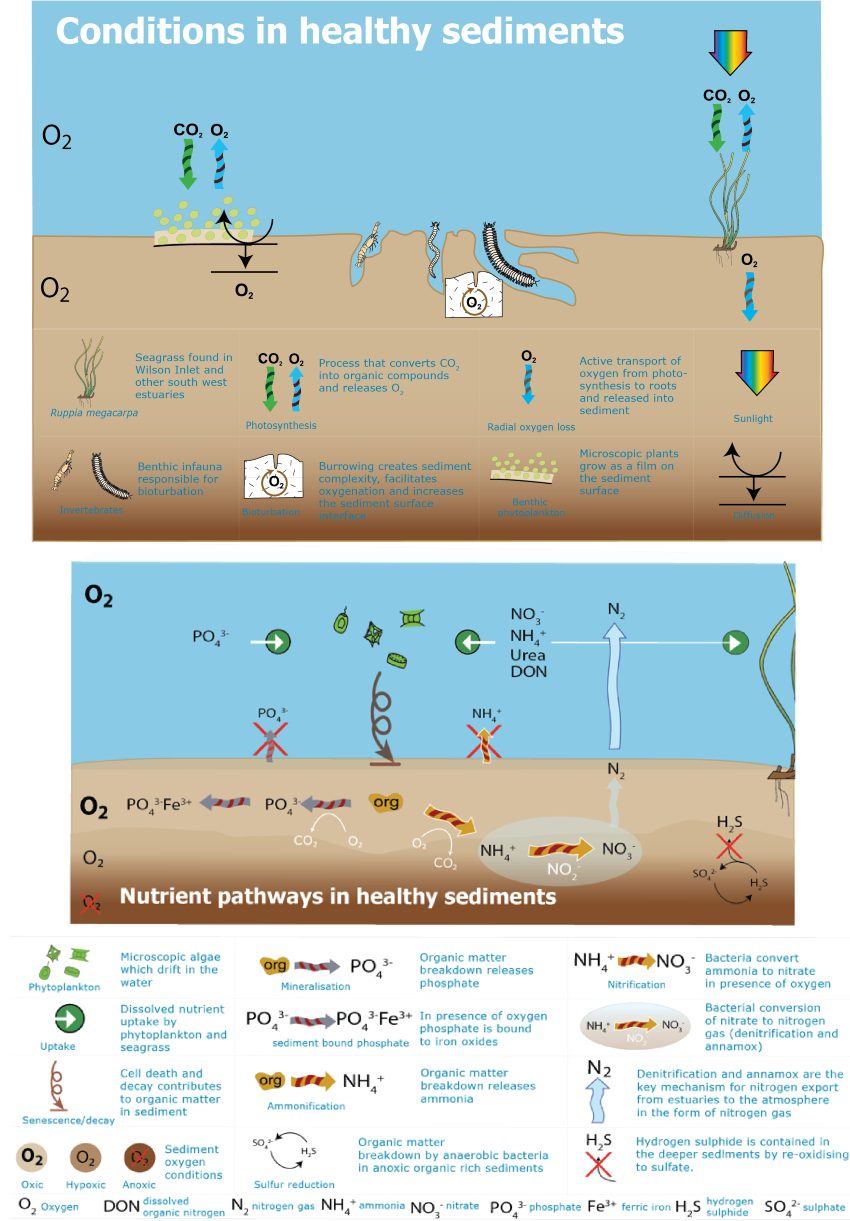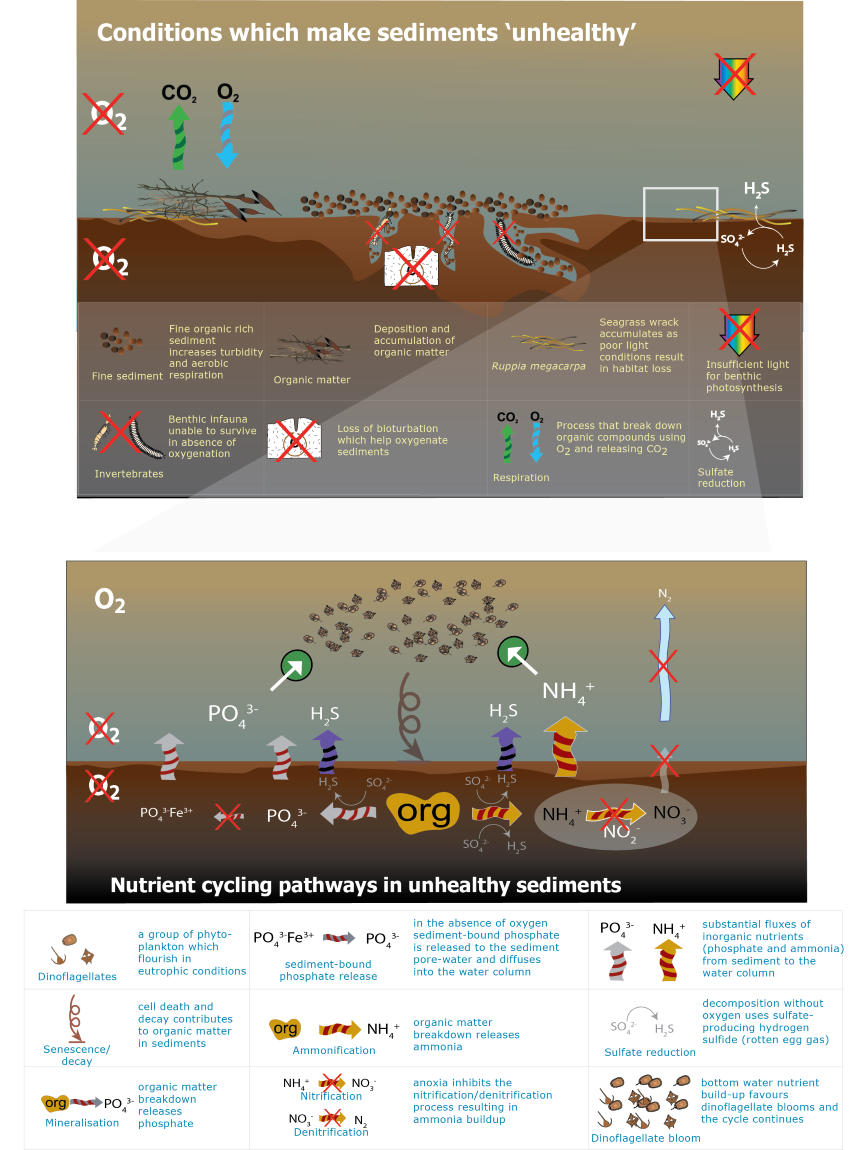Estuarine sediments consist of soil and organic matter derived from both the catchment and internal sources (e.g. decomposing estuarine plants and algae). These sediments can temporarily bind nutrients and other contaminants, or more permanently store these contaminants with burial (i.e. the formation of new sediments on the surface).
Why sediment?
Our interest in sediment quality is related to its role in influencing both the ecology (e.g. animals living in the sediment) and the bottom waters. We are mostly interested in the sediment-surface interface with the water column, and the movement of oxygen, nutrients or other contaminants across this boundary.
Sediment conditions
Sediment conditions can deteriorate (unhealthy sediments) as a result of eutrophication or contamination (e.g. historical land use or acid sulfate soils). These sediments are high in organic matter, often high temporary stores of nutrients, and can also be contaminated (e.g. metals, organic contaminants).
Sediment oxygen concentrations are reduced by decomposition processes which consume oxygen and may also release nutrients (further promoting plant and algal growth). In contrast, healthy sediments are oxygenated more deeply into the surface layers, support healthy benthic invertebrate communities and may retain their temporary stores of nutrients for longer.
Sediment as an indicator
Over a number of years, we have worked with Geoscience Australia, and scientists from universities in Australia, Denmark and the USA, to develop sediment indicators of estuary condition.
How healthy an estuary's sediments are can be determined by a collective understanding of the:
- phosphorus binding efficiency
- denitrification efficiency
- sediment nutrients (stores and vertical profiles)
- sediment composition (grain size and organic matter content)
- sediment oxygen demand.
As a key component of assessing estuarine health, sediment studies have been conducted in most estuaries on the South Coast of WA such as Wilson, Parry, Irwin, Walpole Nornalup, Torbay, Wellstead, Beaufort, Gordon, and Stokes Inlets and Oyster and Princes Royal Harbours. Hardy and Leschenault Inlets along with the Vasse-Wonnerup, Peel Harvey and Swan-Canning estuaries have now been included.
Sediment quality is also measured for river health assessments to answer management questions about land use practices within a catchment – see the South West Index of River Condition for further information.
More information
You can read more about our work on the Healthy Estuaries website.




